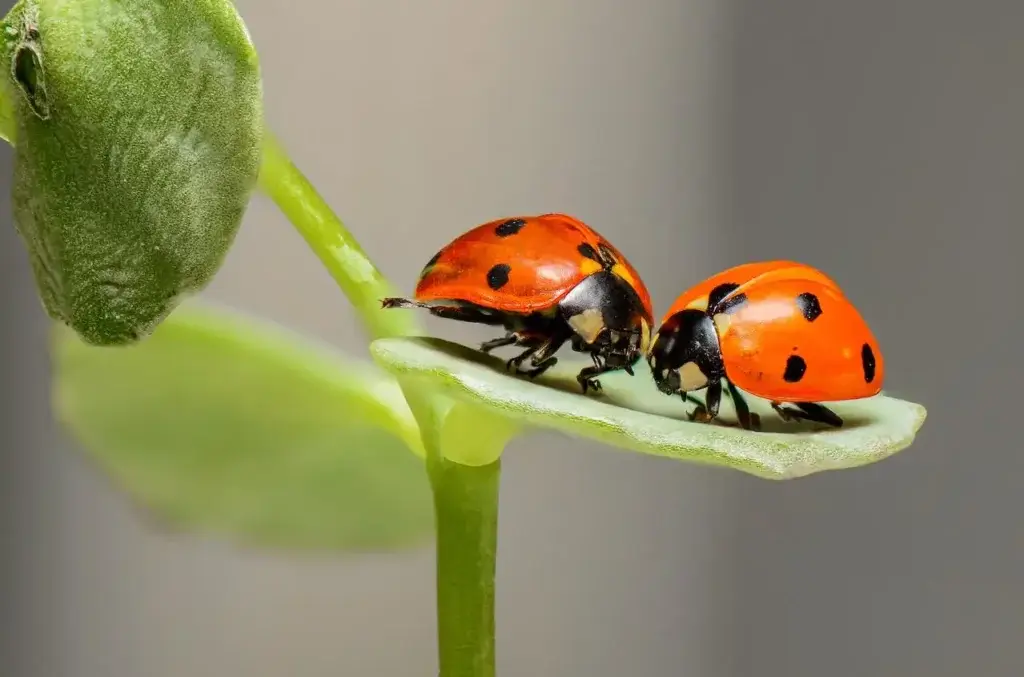
Are Lady Bugs Bad?
As far as insects go, ladybugs are better-liked than most: they eat other insects, don’t spread disease, and in folklore are considered good luck. Basically, they’re considered a non-threat, and its rare that someone sees a ladybug and has the instant negative reaction that they have when they see other insects. But are lady bugs bad?
There is a specific type of lady beetle that actually does pose some threats, and it’s only fairly recently been found in North Carolina: the Asian Lady Beetle. Let's take a look at the Asian Lady Beetle and answer the question, "Are lady bugs bad?"

Table of Contents
What Are Lady Bugs?
Ladybugs, also known as ladybirds in some regions, are small beetles with distinct orange or red husk and black spots (though some exhibit different colors and patterns). Ladybugs are beneficial to ecosystems and agriculture as they primarily feed on aphids and other plant-eating pests, making them valuable allies in natural pest control.
They undergo complete metamorphosis, starting as eggs laid on plants, then hatching into larvae that resemble tiny alligators before transforming into pupae and eventually emerging as adults. Their presence is often associated with luck and prosperity in many cultures worldwide, making them not just a beneficial insect but also a symbol of good fortune.
Despite all of those adorable facts about lady bugs... we still want to get down to the bottom of how are lady bugs bad? And to answer that question: they're not.
Ending the Debate: Are Lady Bugs Bad?
So, are lady bugs bad? Not really. Ladybugs are generally considered beneficial insects because they primarily feed on plant-eating pests such as aphids, scale insects, and mites. In doing so, ladybugs help to control their populations and protect plants and gardens from damage.
However, there are some rare instances where certain species of ladybugs can become harmful: meet the Asian Lady Beetle.
What is the Asian Lady Beetle?
Asian Lady Beetles are insects that, as their namesake implies, a type of beetle that is native to Asia. However, in 1992 they were reported to be present in North Carolina. Interestingly, even though these insects were originally native to Asia, and are only one of the thousands of species of ladybug, they have actually become the most prevalent ladybug in the United States.
What do Asian Ladybugs Look Like?
These ladybugs have a few distinct features:
- They are ¼ of an inch long.
- Females are slightly larger than males.
- Colors vary. Some have yellow, orange, or beige forewings, while others are bright reddish-orange in color.
- They typically have distinct black spots, although some have faded spots, and some have none at all.
The Rebel of the Species: How Are Lady Bugs Harmful?
While truthfully these insects don’t pose the sort of threat that other insect pests do, that doesn’t mean that they’re totally harmless. So how are lady bugs bad?
- They Can Be an Allergen: When the weather starts to get cold, Asian Ladybugs will swarm indoors sometimes in the thousands. This can be an issue; in fact, one review showed that around 21% of people might have a sensitivity to ladybug allergens. This can mean cough, eye inflammation, runny nose and stuffiness, and even acute asthma for those affected by ladybug presence.
- They Can Be Harmful to Dogs: We've had many people ask, "Are Asian Beetles poisonous?" On occasion dogs will...well, eat ladybugs, and this can cause a poor reaction, according to the American Kennel Club. While reactions are rare, they can include:
- Behavioral changes
- Drooling
- Drowsiness
- Constipation
- Vomiting
This isn’t to say that Asian Lady Beetles don’t also have beneficial qualities--in fact, they are quite well known as prolific aphid eaters, which makes them well-known as helpful to farmers trying to protect their crops. When the weather cools down and crop season ends and they start to make their way inside, though, ladybugs can quickly become a nuisance to both people and dogs
Home Pest Control Tips for Lady Bug Prevention
If you have a dog, or are concerned that you may be allergic to ladybugs, or just don’t want to deal with a horde of them hanging out in your home, there are a few things that you can do to prevent them:
- Seal external cracks and openings that ladybugs could potentially crawl through.
- Install screens over roof vents and checking current window screens for signs of damage
- Try planting mums and lavender, which are known to naturally deter ladybugs.
Getting Rid of Japanese Ladybugs
If you’re in a situation where prevention is no longer an option, there are a number of things that you can do to get rid of Japanese Lady Bugs:
- Vacuum: Vacuuming up ladybugs is an easy way to get rid of them, as long as you don’t have too many. If you decide to use a vacuum, make sure that you clean out the bag relatively quickly, to avoid future clogging.
- Blacklight Traps: Blacklight traps work well for catching beetles in some situations such as commercial facilities, such as hospitals and some manufacturing plants. Some people use light traps inside their homes but these do not always produce the best results, so be aware your home blacklight trap might not be the best solution.
- Biological Control: A native tachinid fly species called Strongygaster triangulifera attacks lady beetles by laying their eggs on them. Newly hatched maggots will bore into and gradually destroys the lady beetle.
Final Word: Are Lady Bugs Bad?
So, are lady bugs bad? Not really. There are simple ways to prevent a lady bug infestation in your home or garden.
And while a simple vacuuming might do the trick and is simple to achieve, chances are that you aren’t going to introduce a tachinid fly species into your home to take care of ladybugs. If your ladybug problem has gotten out of hand, it’s time to contact the exterminators at A-1 Pest Control for a free estimate. You can learn more about our Home Shield home pest control plans, which we recommend for ladybug control, here.
Are there any diseases or health risks associated with ladybugs in North Carolina?
Generally, ladybugs found in North Carolina pose no significant health risks to humans. However, in rare cases, handling ladybugs can cause skin irritation or allergic reactions in sensitive individuals. It's advisable to avoid direct contact with ladybugs if you have known sensitivities.
Can I purchase and release ladybugs in my garden in North Carolina to control pests?
While it's possible to purchase and release ladybugs as a form of pest control in North Carolina, it's essential to consider factors such as native species preservation and release timing. Additionally, promoting a diverse and healthy ecosystem in your garden can naturally attract and support ladybug populations.
What are the natural predators of ladybugs in North Carolina?
Ladybugs have relatively few natural predators in North Carolina due to their defensive mechanisms, such as their vibrant coloration, which warns potential predators of their unpalatability. However, some birds, spiders, and certain insects may still prey on ladybugs opportunistically.
Are ladybugs in North Carolina affected by pesticides or chemicals used in gardening?
Ladybugs, like other insects, can be impacted by pesticides and chemicals used in gardening if not applied judiciously. It's essential to use environmentally friendly and targeted pest management strategies to minimize harm to beneficial insects like ladybugs.
What should I do if I find ladybugs in my home?
If you find ladybugs invading your home in North Carolina, you can gently collect and release them back outside. Sealing cracks and crevices in doors, windows, and foundations can also help prevent them from entering your home. Remember, the answer to the question, "Are lady bugs bad?" While their presence indoors might be bothersome, ladybugs are not harmful to humans.
Do ladybugs hibernate or migrate during the winter?
es, ladybugs in North Carolina, like many other regions, often hibernate in sheltered locations during the winter months to survive the cold. While some may migrate to warmer areas, many local species undergo diapause, a period of dormancy, until conditions become favorable again.
